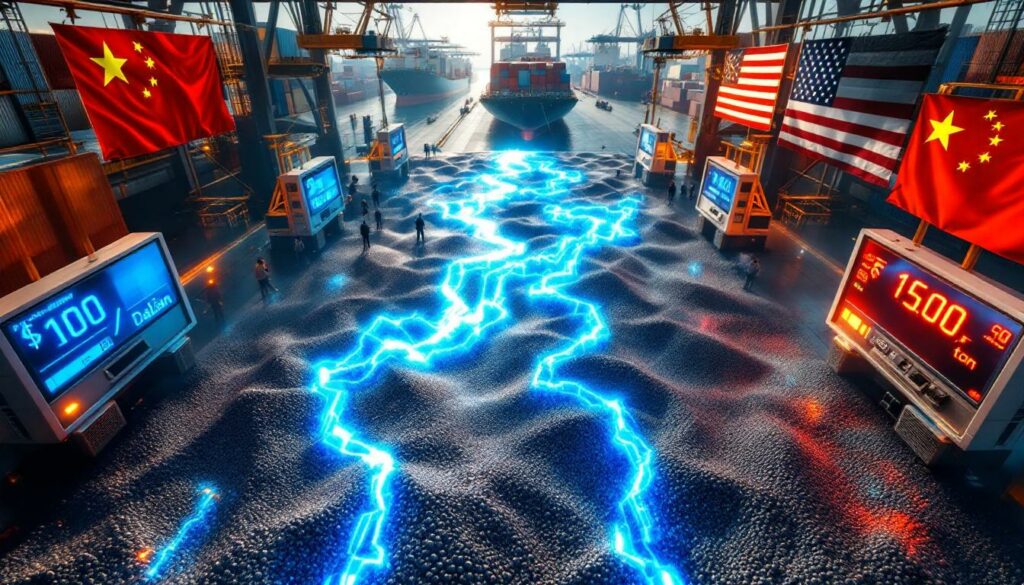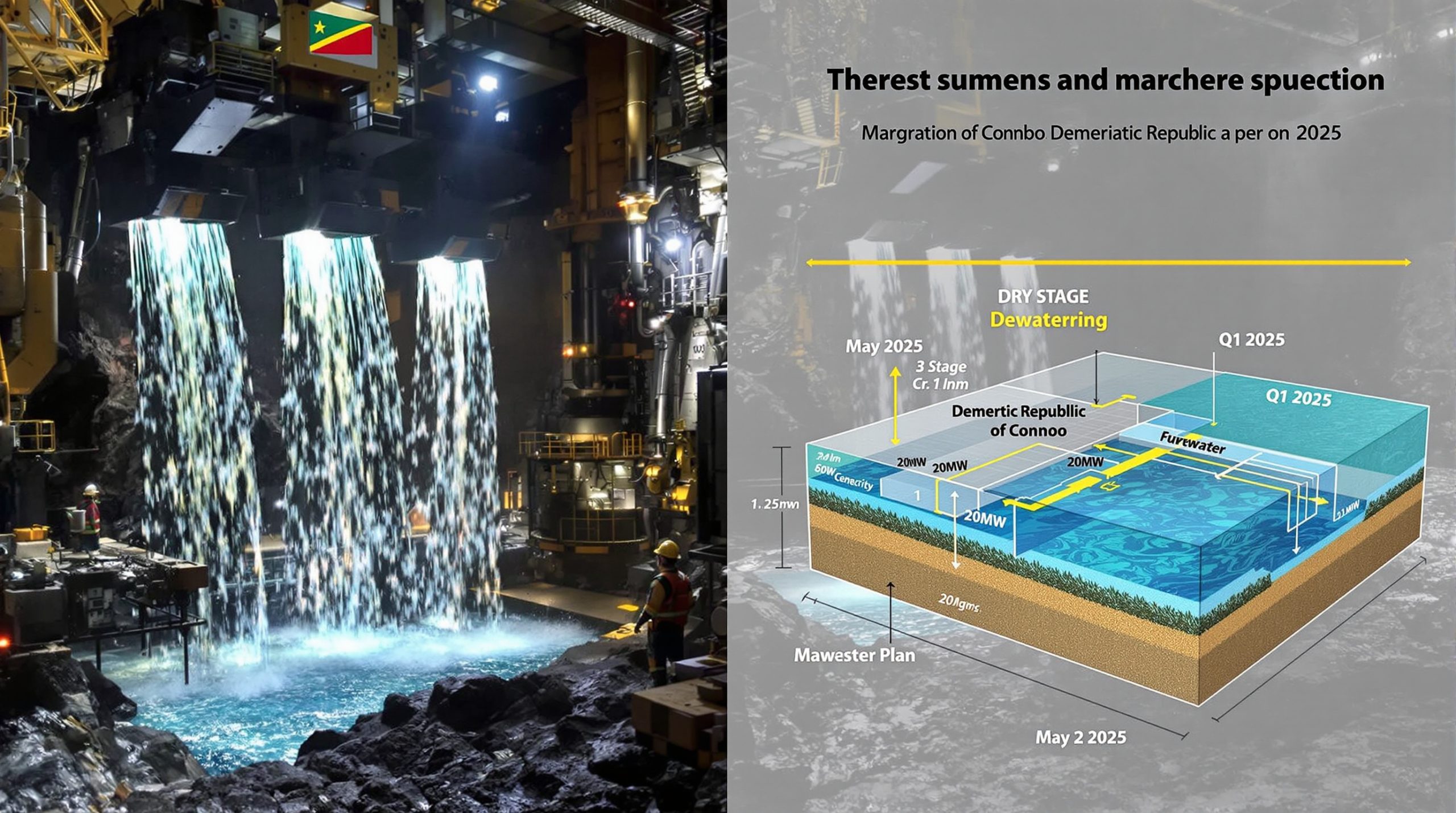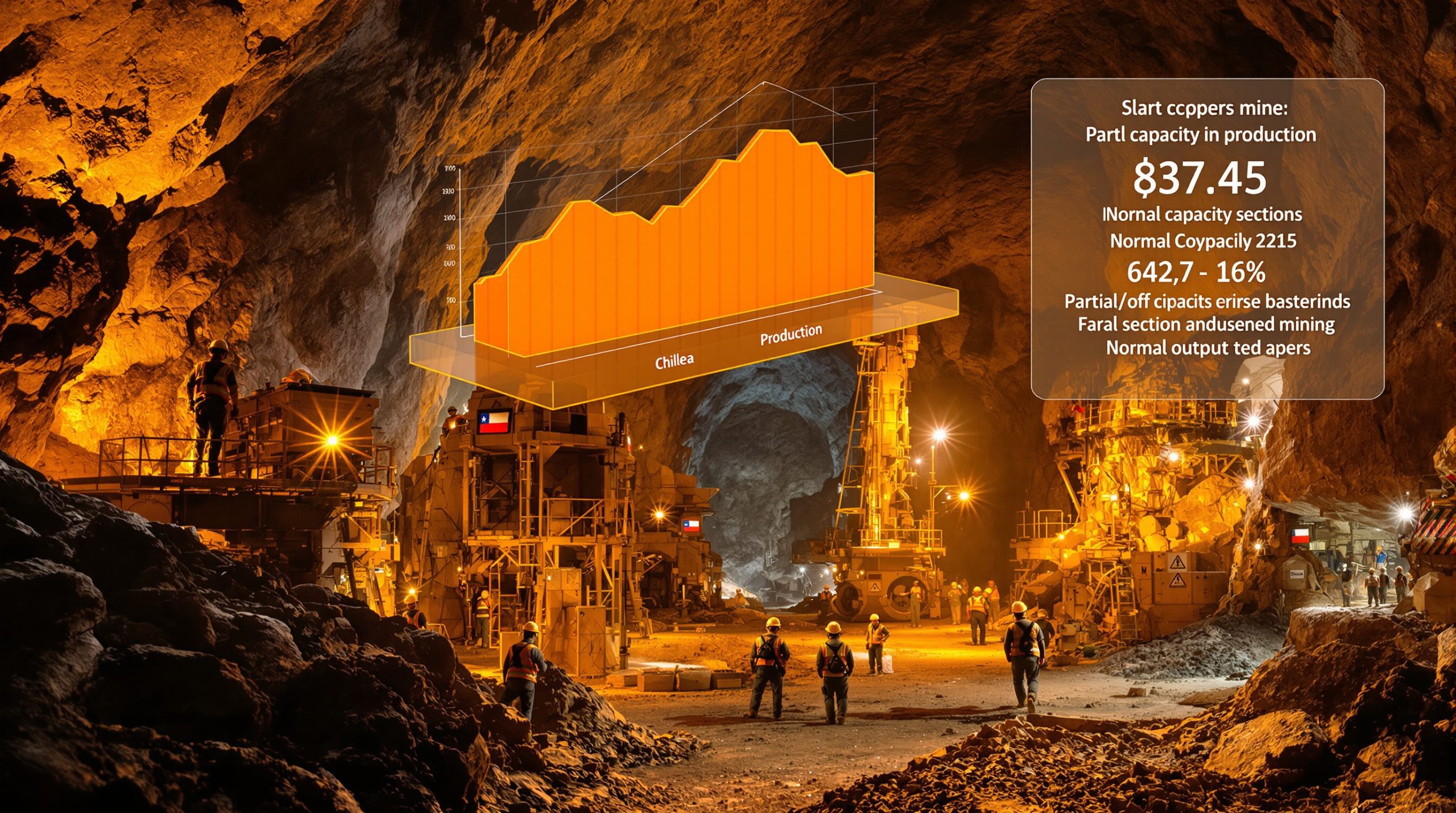How Are Iron Ore Prices Performing in the Current Market?
Iron ore prices have maintained stability above the psychologically important $100 per metric ton threshold, with the Singapore Exchange benchmark September futures reaching $102.7 per ton as of July 29, 2025. This represents a 1.9% increase from previous trading sessions, indicating resilience in the market despite ongoing economic uncertainties.
The most actively traded September iron ore contract on China's Dalian Commodity Exchange (DCE) also showed positive movement, closing 0.63% higher at 798 yuan ($111.17) per ton after recovering from early losses during the trading day.
Current Iron Ore Price Indicators
| Exchange | Contract | Price | Daily Change |
|---|---|---|---|
| Singapore Exchange | September Futures | $102.7/ton | +1.9% |
| Dalian Commodity Exchange | September Contract | 798 yuan ($111.17)/ton | +0.63% |
Key Market Fundamentals Supporting Prices
- Declining port arrivals (down 7.6% week-on-week to 23.2 million tons)
- Sustained hot metal production in China
- Supply-demand balance remaining relatively favorable
Industry analysts note that the iron ore price stays above $100/t amid Sino-US trade talks due to several underlying factors, including tightening supply conditions and resilient Chinese steel production. According to Mysteel data, port inventories have been drawing down consistently for several weeks, creating a supportive environment for price stability.
What Impact Are US-China Trade Talks Having on Iron Ore Markets?
The Stockholm Negotiations
High-level officials from the United States and China began discussions in Stockholm on July 28, 2025, with talks continuing into July 29. These negotiations aim to address longstanding economic disputes between the world's two largest economies, with potential implications for global commodity markets.
The ongoing US tariffs impact represent a critical juncture for commodities, including iron ore. While direct trade in iron ore between the two nations is limited, the broader economic implications of these discussions could significantly influence Chinese industrial activity and, by extension, iron ore demand.
Market Sensitivity to Diplomatic Relations
While the US and China don't have extensive direct trade connections specifically in steel and iron ore, market analysts note that broader trade tensions can significantly impact demand forecasts in China, which remains the world's largest iron ore consumer. The outcome of these talks could influence market sentiment and price trajectories in the coming weeks.
"The iron ore market is watching the Stockholm negotiations closely as any shift in trade relations could alter China's export-oriented manufacturing outlook, which ultimately drives steel consumption," notes a senior commodities analyst at a leading global investment bank.
Potential Scenarios Based on Trade Talk Outcomes
- Positive resolution: Could boost Chinese industrial confidence and support iron ore demand
- Continued tensions: Might create uncertainty in demand outlook, potentially pressuring prices
- Partial agreements: May lead to sector-specific impacts depending on which industries are affected
Iron ore traders are particularly attentive to negotiations affecting sectors with high steel intensity, such as automotive, machinery, and infrastructure equipment. Any tariff adjustments in these categories could have multiplier effects on steel demand forecasts.
How Are Supply Fundamentals Affecting Iron Ore Prices?
Declining Port Inventories
Recent data from consultancy Mysteel shows iron ore arrivals at major Chinese ports decreased by 7.6% week-on-week to 23.2 million tons for the week ending July 27, 2025. This reduction in available supply provides underlying support for current price levels.
The inventory situation represents a key factor in why iron ore price stays above $100/t amid Sino-US trade talks. When port stocks decline, Chinese steel mills must secure additional material to maintain production levels, creating price support even during periods of economic uncertainty.
Production and Consumption Balance
Analysts at Shengda Futures have highlighted that "fundamentals of iron ore are relatively healthy amid falling arrivals and resilient hot metal output," creating a supportive environment for price stability above the $100/ton threshold.
This balance is particularly notable given the seasonal patterns typically seen in July-August, when construction activity in China often slows due to high temperatures in key regions. The resilience in hot metal output suggests underlying strength in other steel-consuming sectors.
Supply Chain Considerations
The combination of controlled supply and steady demand creates a balanced market dynamic that has helped iron ore maintain its position above key psychological price levels despite broader economic uncertainties.
Maritime freight rates for iron ore shipments have also increased by approximately 8% over the past month, reflecting tighter vessel availability and supporting the thesis that physical iron ore markets remain fundamentally sound despite macroeconomic headwinds.
What Role Does Chinese Economic Policy Play in Iron Ore Markets?
Upcoming Politburo Meeting
Market participants are closely monitoring the Chinese Politburo meeting expected by the end of July 2025. This high-level government meeting will likely set China's economic policy direction for the remainder of the year, with potential implications for industrial activity and commodity demand.
The timing of this meeting coincides with the ongoing Sino-US trade talks, creating a complex policy environment that could significantly influence iron ore price trends and trajectories. Historical patterns suggest that Politburo meetings often precede policy adjustments that impact steel-intensive sectors.
Policy Expectations and Market Sentiment
Any signals regarding infrastructure investment, real estate sector support, or industrial production targets could significantly influence iron ore demand forecasts and price decline analysis for the remainder of 2025.
Of particular interest will be any mention of:
- Urban renewal projects, which typically require substantial quantities of steel
- Railway expansion initiatives, representing high steel intensity per investment dollar
- Environmental policy adjustments that might restrict steel production capacity
- Financing mechanisms for local government infrastructure projects
Historical Context of Policy Impact
Previous Politburo meetings have resulted in meaningful shifts in commodity markets, particularly when new stimulus measures or industrial production targets have been announced.
For example, the July 2023 Politburo meeting led to a significant relaxation of property sector restrictions, resulting in a 15% increase in iron ore prices over the following month as investors anticipated improved construction activity.
How Are Other Steelmaking Ingredients Performing?
Coking Coal and Coke Price Movements
While iron ore has maintained strength, other steelmaking ingredients have shown different trajectories:
| Material | Price Movement | Contributing Factors |
|---|---|---|
| Coking Coal | -6.63% | Second consecutive session decline |
| Coke | -2.62% | Following coking coal's downward trend |
This divergence creates an interesting cost dynamic for steel producers. As coking coal prices decrease, profit margins for steel mills potentially improve, allowing them to maintain production levels even if steel prices soften—indirectly supporting iron ore demand.
Recent Price Volatility in Coal Markets
Both coking coal and coke had experienced significant price surges in the week prior to these declines, driven by anticipation of potential supply constraints. The Chinese government announced inspections at eight key coal production hubs to address excess production, creating temporary market uncertainty.
These regulatory inspections highlight the government's ongoing efforts to balance industrial production with environmental considerations, a policy approach that affects multiple raw materials in the steelmaking supply chain.
Steel Product Performance
Most steel benchmarks on the Shanghai Futures Exchange showed positive movements:
| Steel Product | Price Change |
|---|---|
| Rebar | +1.98% |
| Hot-rolled Coil | +2.01% |
| Wire Rod | +2.33% |
| Stainless Steel | -0.12% |
The strength in construction-related steel products (rebar and wire rod) suggests underlying confidence in infrastructure and building activity, despite ongoing property sector challenges in China. This sectoral strength helps explain why iron ore price stays above $100/t amid Sino-US trade talks.
What Are the Key Factors to Monitor for Iron Ore Price Forecasts?
Critical Market Indicators
- US-China trade negotiations: Outcomes from the Stockholm talks could influence global growth forecasts and Chinese export expectations
- Chinese Politburo meeting: Economic policy direction for H2 2025 will set the tone for industrial production
- Port inventory levels: Continuing supply constraints or potential rebuilding will influence price dynamics
- Steel production rates: Particularly hot metal output in China, which directly drives iron ore consumption
- Global economic indicators: Broader manufacturing and construction activity, especially in regions beyond China
The interaction between these factors creates a complex matrix for 2025 iron ore forecast, with trade relations representing a particularly uncertain variable in the current environment.
Potential Market Disruptors
- Unexpected policy shifts from major iron ore consuming or producing nations
- Weather-related supply disruptions in key production regions like Western Australia or Brazil
- Changes in environmental regulations affecting steel production intensity
- Further developments in global trade relations beyond US-China
"While current fundamentals support prices above the critical $100 per ton level, policy decisions in Beijing and trade negotiations in Stockholm represent potential inflection points that could alter the market's trajectory," observes a veteran iron ore market analyst.
Expert Perspectives on Market Direction
Industry analysts suggest that while fundamentals currently support prices above $100/ton, market participants should remain alert to policy signals and trade developments that could alter the supply-demand balance in the coming months.
Technical analysts note that the $100/ton level has served as both psychological support and resistance over the past 18 months, with prices generally rebounding when approaching this threshold from above.
How Does Iron Ore Price Stability Impact the Mining Sector?
Producer Profitability Thresholds
The $100/ton price level represents an important threshold for many iron ore producers:
- Major producers (Rio Tinto, BHP, Vale): Highly profitable at current price levels, with cash costs typically between $30-50/ton
- Mid-tier producers: Comfortable operating margins allowing for capital returns and modest expansion
- Higher-cost producers: Viable operations with reasonable returns, but vulnerable to any significant price declines
This stratification explains why miners surging insights continue to generate substantial cash flow even during periods of price moderation, while higher-cost operations face challenges when prices dip below $100/ton.
Investment and Development Implications
Sustained prices above $100/ton support:
- Capital expenditure on existing mine optimization and technology deployment
- Development decisions for expansion projects with medium-term production horizons
- Exploration activities for new resources to replace depleting reserves
For investors, the current price environment offers a balance between profitability for producers and sustainability for consumers, creating a relatively stable investment thesis for the sector.
Regional Mining Sector Impacts
Different iron ore producing regions experience varying benefits from current price levels based on their production costs, ore quality, and transportation expenses:
- Australian producers: Benefit from proximity to Chinese markets and relatively low freight costs
- Brazilian operations: Higher-grade ore commands premium pricing but faces higher shipping expenses
- Emerging producers: Projects in West Africa and elsewhere become increasingly viable at sustained $100+ pricing
This regional differentiation creates opportunities for strategic investments based on production cost advantages and ore quality premiums.
FAQ: Iron Ore Market Fundamentals
What is the significance of the $100/ton threshold for iron ore?
The $100/ton level represents a psychological and financial threshold that signals healthy market conditions. Prices above this level generally indicate strong demand, particularly from China's steel sector, and provide comfortable profit margins for most producers across the cost curve.
From a historical perspective, iron ore has traded above $100/ton for approximately 60% of the time over the past decade, making this level an important reference point for industry participants.
How do US-China trade relations affect iron ore despite limited direct trade?
While the US and China don't have extensive direct trade in iron ore, their economic relationship impacts global growth forecasts, manufacturing activity, and investment confidence. China, as the world's largest steel producer and iron ore consumer, is particularly sensitive to trade tensions that might affect its export markets or economic growth.
The US tariffs impact influence market sentiment beyond direct trade flows, affecting everything from consumer confidence to industrial investment decisions that ultimately drive steel consumption.
What factors could push iron ore prices below the $100/ton level?
Several factors could challenge current price levels, including:
- Significant economic slowdown in China
- Increased supply from major producers
- Stricter environmental policies limiting steel production
- Technological changes reducing iron ore requirements in steelmaking
Of these, environmental policy represents a particularly important consideration given China's commitment to peak carbon emissions by 2030, which could potentially constrain traditional blast furnace production.
How do Chinese coal production policies affect iron ore markets?
Coal production policies impact the cost and availability of coking coal, a critical ingredient in steelmaking alongside iron ore. When coking coal prices rise due to supply constraints, it affects overall steelmaking costs and can influence demand dynamics for all steelmaking raw materials, including iron ore.
The recent government inspections at eight key coal production hubs demonstrate how regulatory interventions can create price volatility throughout the steelmaking supply chain, indirectly affecting iron ore markets.
Disclaimer: This analysis contains forward-looking statements regarding commodity prices and market conditions. Such projections involve inherent risks and uncertainties, and actual outcomes may differ materially from those anticipated. Readers should conduct their own research before making investment decisions based on this information.
Wondering How to Spot the Next Major Mineral Discovery on the ASX?
Discovery Alert's proprietary Discovery IQ model provides instant notifications when significant mineral discoveries are announced on the ASX, giving you a crucial market advantage. Explore why historic discoveries can generate substantial returns by visiting Discovery Alert's dedicated discoveries page.




